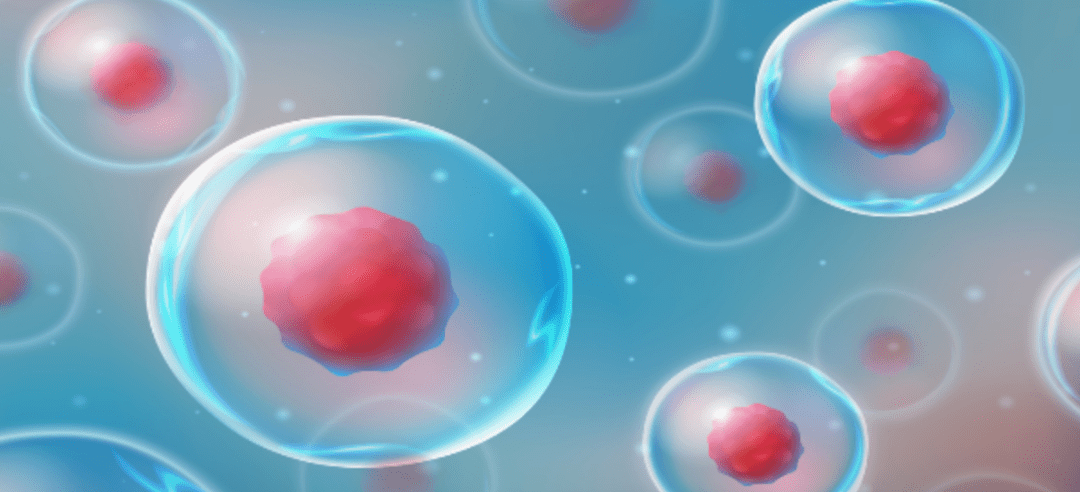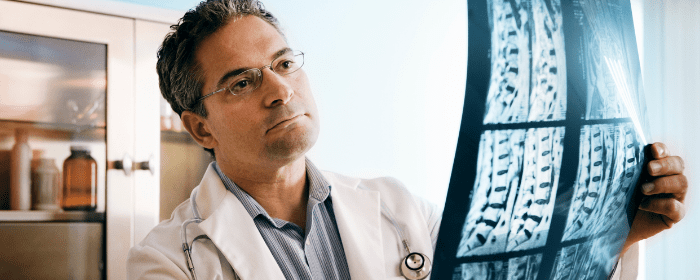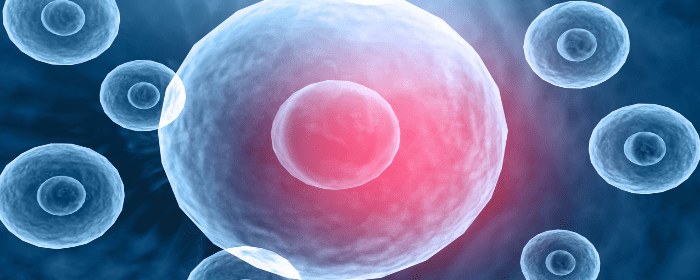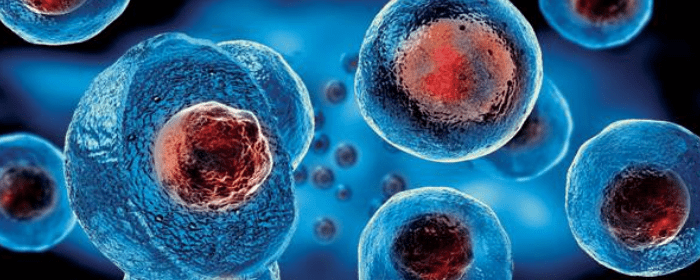
by Stemedix | Aug 15, 2022 | Stem Cell Therapy
Stem cells are essential in understanding human development, disease, injury, and potential treatments and cures. However, since the initial research on these critical cells began with embryonic stem cells, many people dismiss the benefits of stem cell research and treatment as controversial. Unfortunately, that dismissal ignores what may be of adult stem cells, which are more commonly used in therapies today. Adult stem cells provide the same benefits as embryonic stem cells but with some limitations.
What Are Stem Cells?
Stem cells are unique cells found in the human body that are the only cells that can differentiate into new cell types. Depending on the need, stem cells can divide and create brain, muscle, and blood cells, as well as various other specialized cells in the body. This ability earned them the label of the “building blocks of cells.”
Stem cells may also help repair damaged tissues, allowing them to play a critical role in managing condition and injury symptoms.
What Are the Types of Stem Cells?
There are two primary forms of stem cells – embryonic and adult.
Embryonic Stem Cells
Embryonic stem cells come from a blastocyst, an early-stage embryo before it implants. In the very early days of forming a human, cells reach a blastocyst stage, which occurs about four to five days after fertilization.
Embryonic stem cells are particularly valuable since they can divide unlimitedly under the right conditions. Since these are the very first cells the body forms to make a human, they can become all types of cells. In addition, they are pluripotent, meaning they can become many types of cells.
The embryonic stem cells used in research now come from unused embryos donated from in-vitro procedures.
Adult Stem Cells
Adult stem cells have two main types. One type of adult stem cell comes from tissue inside the body, such as bone marrow, fat tissue, or skin tissue. However, the number of stem cells in these tissues is limited, and they can only differentiate into specific types of cells, making them multipotent, not pluripotent.
Scientists have discovered ways to change adult stem cells in a lab to make them pluripotent, like embryonic stem cells. These are induced pluripotent stem cells, and they still come from adult tissue.
Stem Cell Therapy
Currently, physicians and scientists may use hematopoietic stem cells (HSCs) or mesenchymal stem cells (MSCs) to help manage conditions. HSCs are adult cells found in the bone marrow. Recently, researchers have found strong evidence that HSCs are pluripotent and may serve as the source of most cells in the body. MSCs are a multipotent cell that can differentiate into different tissues in the body and are found in adipose (fat), umbilical cord, and bone marrow tissues.
While the early years of stem cell research focused on embryonic stem cells, researchers are now uncovering the capability of adult stem cells and discovering new and exciting ways to help patients with managing their conditions and injuries with these unique cells. To learn more about the services offered at Stemedix, contact us today!

by admin | Aug 5, 2022 | Spinal Cord Injury, Mesenchymal Stem Cells, Stem Cell Research, Stem Cell Therapy
Spinal cord injury (SCI) continues to be a significant cause of disability. In fact, it is estimated that annual SCIs account for nearly 18,000 injuries in the United States and between 250,000 and 500,000 injuries worldwide[1]. While the main cause of SCIs in the United States continues to be motor vehicle accidents, other contributors include falls, recreational accidents, and complications from medical procedures.
In their attempt to minimize damage after SCI, researchers have proposed several treatment options. This review conducted by Zoehler and Rebellato identifies cell therapy, and specifically treatment with mesenchymal stem cells (MSCs), as the primary form of neuroregenerative treatment for SCIs.
Research has shown that mammals are unable to regenerate nervous cell tissue in an area damaged as a result of a SCI, which means currently they will be subject to permanent disability after suffering such an injury.
Current treatments for SCIs have proven unable to repair the damage, rather they are used to relieve SCI-associated symptoms, including pressure and scarring, while also attempting to reduce hypoxia resulting from edema and hemorrhaging. One such treatment, spinal compression surgery, has shown to be successful at achieving these outcomes with results being much better if the surgery is completed within 24-hours of the SCI.
Another treatment currently used after SCI is methylprednisolone sodium succinate (MPSS) administered intravenously. In addition to inhibiting lipid peroxidation, MPSS inhibits post-traumatic spinal cord ischemia, supports aerobic energy metabolism, and attenuates neurofilament loss. However, because this treatment is associated with gastrointestinal bleeding and infection, it is recommended to be used with caution.
While not yet fully understood, cell therapy – and specifically therapy using MSCs – has presented promising findings related to regenerating tissue after a SCI. It is widely believed that MSCs effectiveness is related to their ability to secrete different factors and biomolecules.
MSCs also reduce inflammation, which is important in this application because inflammation is known to be a secondary event after sustaining initial SCI.
The authors point out that a better understanding of the specific mechanisms related to the regenerative effects of MSCs used when treating SCI is required in order to develop future MSC-based treatments designed to address SCI in humans. Currently, despite the recent increased focus on the use of cell therapy to treat SCI and central nervous system trauma, there is no consensus on a number of essential topics, including cell type, source, number of cells infusion pathways, and number of infusions to achieve this goal.
Zoehler and Rebellato also point out that it’s important to better understand how the reorganization of injured neural tissues associated with MSCS is related to the restoration of neural function.
Numerous animal model and human clinical trials have confirmed the regenerative and neuroprotective potential of MSCs without adverse effects during or after infusion. The authors close this review by highlighting that MSCs continue to demonstrate potential as an alternative for SCI therapy, primarily because the therapy is not limited by the time of injury and has shown measurable improvements in patients with complete and incomplete SCI.
Source: Fracaro L, Zoehler B, Rebelatto CLK. Mesenchymal stromal cells as a choice for spinal cord injury treatment. Neuroimmunol Neuroinflammation 2020;7:1-12. http://dx.doi.org/10.20517/2347-8659.2019.009
[1] “Spinal cord injury – WHO | World Health Organization.” 19 Nov. 2013, https://www.who.int/news-room/fact-sheets/detail/spinal-cord-injury.

by admin | Jul 29, 2022 | Mesenchymal Stem Cells, Stem Cell Research, Stem Cell Therapy
Stem cells, and specifically mesenchymal stem cells (MSCs), have long been considered as a promising therapeutic agent for the treatment of a wide variety of degenerative and ischemic diseases. Over this time, MSC immunomodulation, their capacity for multilineage differentiation, and their ability to self-renew have been well established and are now considered to be clinically relevant.
Considering this, scientists have hypothesized that the therapeutic application of MSCs in immune/inflammatory contexts may be more efficacious than other, more traditional approaches currently used in the field of regenerative medicine.
In this review, Wang et al. specifically focus on the non-traditional use of MSCs as a potential treatment towards immune/inflammatory-mediated diseases and identify important findings and trends in this area of study as they relate to specific immune/inflammation-mediated diseases, including graft-versus-host disease (GVHD), multiple sclerosis (MS), joint diseases [including Osteoarthritis (OA) and rheumatoid arthritis (RA)], inflammatory bowel disease (IBD), and inflammatory airway and pulmonary diseases.
While there have been several promising results indicated in a number of trials using MSC for treatment of GVHD, the same results have not consistently been observed in all trials. One potential reason for the observed difference in results could potentially be a result of heterogeneity observed in conducted trials. Significant observed differences included those between pediatric and adult patients, the type of stem cell transplanted, as well as the MSCs utilized. Interestingly, there has also been a significant difference between results of published trials occurring in Europe (generally positive) compared to those trials occurring in North America (more equivocal results). While MSCs have strong potential for use as a therapeutic agent for GVHD, additional study into patient population and stringent MSC processing criteria are required before consistent and reproducible results are able to be delivered.
As of the publication of this review (2016), Wang et al. identified 23 registered clinical trials using MSCs for the treatment of MS. Additionally, animal models exploring the use of MSCs for the treatment of MS have demonstrated strong therapeutic effects. While many of the clinical trials using MSCs for the treatment of MS were ongoing, several animal models and many additional preclinical studies demonstrated MSCs to have therapeutic efficacy for the treatment of patients with MS.
Since cartilage cannot regenerate, the use of MSCs in treatment of joint diseases are considered a strong therapeutic option for several of these conditions, including OA and RA. Considering that prevention of inflammation and immune attacks on joints must occur in order for the joint repair to occur, and considering the immunosuppressive properties associated with MSCs, MSCs are thought to be well suited for use in the treatment of OA – a thought that has been well supported in both small and large animal studies.
Additionally, several of the 38 clinical trials underway at publication of this review indicated positive results in reduction of OA-induced pain and other related symptoms and for joint repair as observed by cartilage regeneration. On the other hand, similar results have not been observed for RA. The authors point to the detailed mechanistic differences between RA and OA as the likely reason for the observed therapeutic differences observed between the two joint diseases.
The 19 clinical trials and several animal model studies have overwhelmingly demonstrated that MSC therapy is both safe and a highly viable therapeutic option for the treatment of IBD, especially CD fistula formations.
Considering that between 80-90% of MSCs delivered intravenously have been observed to rapidly reach the lungs, MSC therapy has been thought to be particularly well suited for treatment in several pulmonary diseases, including COPD, asthma,emphysema, and even pneumonia. However, while animal models and preclinical studies have demonstrated MSCs to be safe in this application, the 29 registered clinical studies using MSCs for pulmonary disorders have also indicated the application to be safe – but have yet to replicate the efficacy observed and reported in the previously mentioned preclinical animal studies.
The authors of the review conclude that hundreds of clinical trials evaluating the effectiveness of MSC therapy in this application have demonstrated their use to be safe. However, the overwhelmingly positive results reported in preclinical animal studies have not yet been observed through these clinical trials. Considering these findings, Wang et al. call for a better understanding on both the mechanistic properties of MSC Immunomodulation and the pathophysiological details and subsets with specific disease entities as a way to better tailor MSC therapy.
Source: “Human mesenchymal stem cells (MSCs) for treatment towards ….” 4 Nov. 2016, https://www.ncbi.nlm.nih.gov/pmc/articles/PMC5095977/.

by admin | Jul 22, 2022 | Rheumatoid Arthritis, Mesenchymal Stem Cells, Stem Cell Research, Stem Cell Therapy
Rheumatoid arthritis (RA) is a chronic autoimmune inflammatory disorder that causes your immune system to mistakenly attack its own tissue and specifically affects the lining of the joints, resulting in painful swelling, bone erosion, and eventually permanent joint deformity.
With an estimated 1.5 million people in the U.S. living with RA, the disease affects nearly three times as many women as men. In addition to affecting the synovial joints and causing articular destruction and functional disability, an estimated 40% of those diagnosed with RA experience additional signs and symptoms that do not involve the joints; these affected areas often include most body systems and specifically the skin, eyes, lungs, nerves, heart, and blood vessels.
Multiple studies have demonstrated that bone marrow mesenchymal stem cells could be effective for treating a number of autoimmune diseases, including RA. However, little is known about the effectiveness of umbilical cord (UC)-MSCs as they relate to the treatment of autoimmune diseases, specifically RA.
Considering this, it comes as little surprise to learn that bone marrow MSCs (BM-MSCs) have been the most common source of MSCs used in the study of immunosuppression of autoimmune conditions. However, the collection of BM-MSCs requires aspiration, which is an invasive procedure. Additionally, the number of BM-MSCs and the differentiating potential of BM-MSCs both decrease significantly with age.
UC-MSCs, on the other hand, are collected using non-invasive procedures after birth and before the umbilical cord is discarded. Additionally, UC-MSCs have been well documented to possess properties of self-renewal and multipotent differentiation, making them a potential candidate for alternative sources of stem cells.
In this study, Liu et al. examined the suppressive effects of UC-MCSs on the proliferation, invasive behavior, and inflammatory responses of fibroblast-like synoviocytes (FLSs) from patients with RA.
At the conclusion of this study, the authors offered a number of key findings about the effectiveness of UC-MSCs in this application, including:
- US-MSCs inhibited proliferation of FLSs from RA patients
- US-MSCs suppressed the invasive behavior and MMP expression of FLSs from RA patients
- US-MSCs suppressed the inflammatory response of FLSs from RA patients
- UC-MSCs induced hyporesponsiveness of T lymphocytes from RA patients
- UC-MSCs induced Tregs from RA patients
- UC-MSCs prevented tissue damage and reduced inflammatory responses in CIA
The authors conclude by indicating the evidence provided by this study indicates that UC-MSCS can exert a profound inhibitory effect on FLSs and T cells from RA patients and that they might be a therapeutic perspective in RA. Source: “Therapeutic potential of human umbilical cord mesenchymal stem ….” https://pubmed.ncbi.nlm.nih.gov/21080925/.

by admin | Jul 15, 2022 | Osteoarthritis, Extracellular Vesicles, Mesenchymal Stem Cells, Stem Cell Research, Stem Cell Therapy
Osteoarthritis (OA) is the most common form of arthritis, affecting over 525 million people around the world. Characterized by pain, swelling, and stiffness resulting from the degradation of cartilage that provides cushion and protection between our bones, OA is an inflammatory condition without a clear and effective treatment.
OA most commonly affects the hands, knees, hips, and spine, but ultimately can cause damage to any joint in the body. Currently, most treatments for OA are designed to minimize the symptoms of the condition, not to treat or prevent the condition itself.
In recent years, pre-clinical studies of mesenchymal stem cells (MSCs) have demonstrated to be successful in resurfacing areas of degenerated cartilage and early-phase clinical trials found that intra-articular (IA) administration of MSCs leads to a reduction in pain and improved cartilage protection and healing.
In this review, Mancuso et al. provide an overview of the functions and mechanisms of MSC-secreted molecules found in in-vitro and in-vivo models of OA. Although MSCs disappear from the target area soon after administration, they have been found to demonstrate a rich secretory profile that is enhanced by exposure to inflammatory signals and is still able to deliver immunomodulatory effects.
Mancuso et al. highlight that, although chondrocyte apoptosis has long been associated with OA and despite the fact that there is no conclusive report identifying anti-apoptosis effects associated with MSCs, indirect evidence suggests that they have inhibited of ex-vitro cultured OA chondrocytes. Considering this, the authors recommend future studies of joint-associated MSC anti-apoptotic effects as a way to identify direct mediators of the process.
According to the authors of this review, the role of inflammation in the establishment and maintenance of OA is now widely accepted with synovial membrane inflammation a hallmark of OA pathology. Additionally, the biological markers of inflammation positively correlate with knee pain and clinical progression of OA. Studies have demonstrated that licensed MSCs secrete an array of anti-inflammatory cytokines which can help re-establish an equilibrium in the inflamed synovium and reduce inflammation in joints affected by OA.
After being administered, MSCs tend to undergo biological changes more radical than differentiation or licensing, with most completely disappearing 10 days post-injection. However, even after this occurs, there have been significant therapeutic effects observed.
Researchers have found that these apoptotic MSCs communicate with immune cells both directly and indirectly with patient responsiveness to MSCs correlating with their cytotoxic capacity. Mancuso et al. conclude that these findings provide evidence that apoptosis is one of the driving mechanisms of MSC-mediated immunosuppression.
Findings also suggest that the paracrine action of MSCs is not limited to soluble factors and has been shown to produce extracellular vesicles (ECVs). In pre-clinical models, ECVs have been observed to have anti-apoptotic, anti-fibrotic, pro-angiogenic, and anti-inflammatory effects. In addition, these ECVs – when derived from MSCs – inhibit the proliferation of lymphocytes, macrophages, and B cells.
MSC-derived ECVs have shown to be promising in rat models of osteoporosis and have recently been tested in OA animal models with promising results. The authors point out that while further study is required, the initial findings indicate that the use of MSC-ECVs in therapy designed for OA would bring many advantages when compared to cell-derived products. The authors also point out that several issues with ECVs still have to be considered, including the need for them to be specifically tailored for the specific indication being treated.
Mancuso et al. conclude that MSCS has already proved to be a valuable tool for many conditions and there is significant potential for their use in OA. Phase I clinical trials have established that the direct IA administration of MSCs in OA patients is safe and pain reduction and increased cartilage thickness have been observed after injection. However, they also call for additional studies to examine the role of cell death in mediating the therapeutic effects of MSCs.
Source: Mesenchymal Stem Cell Therapy for Osteoarthritis: The Critical Role ….” 11 Jan. 2019, https://www.frontiersin.org/articles/10.3389/fbioe.2019.00009/full.






 St. Petersburg, Florida
St. Petersburg, Florida
